A Japanese research team develops a finger-shaped robot with 'living skin'

A research team at the University of Tokyo graduate school has developed a 'finger-shaped robot with living skin.' Robots that use cultured skin made from human skin cells as a covering material can repair wounds even if they are injured.
Living skin on a robot: Matter
world's first! Robots covered with living skin | The University of Tokyo
https://www.u-tokyo.ac.jp/focus/ja/press/z0114_00019.html
Scientists Have Developed'Living' Skin For Robots, And It's Quite Something
https://www.sciencealert.com/scientists-have-made-this-creepy-as-heck-living-skin-for-robots
If you play the following movie, you can see how the robot with live skin developed this time moves.
Robotic finger with living human skin --YouTube
Robots have three joints, like human fingers. From the state where you stretch your fingers ...
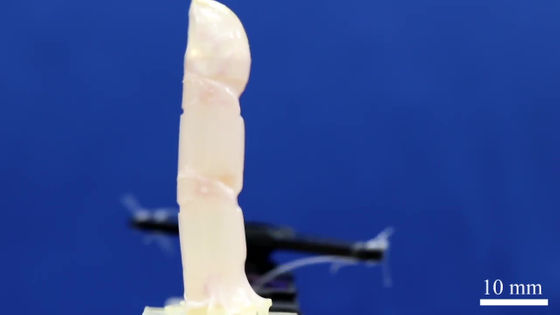
Can be bent sharply. The skin is softer than materials such as silicone, but it does not tear.
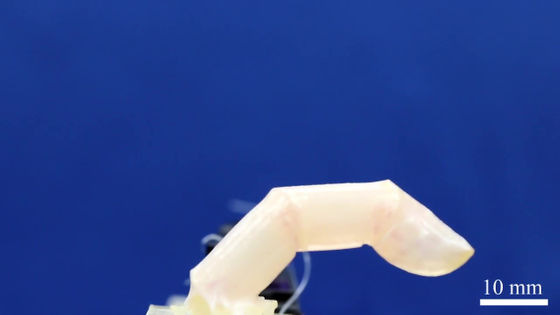
Zoom in to see the texture of your skin.
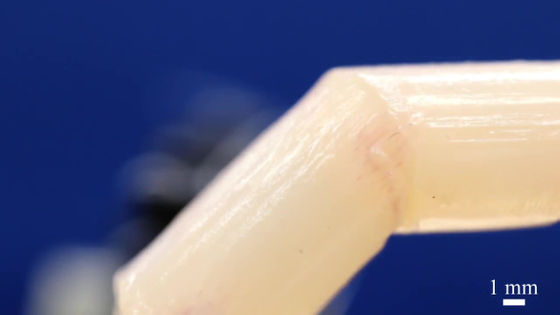
In a paper, a research team led by Professor Shoji Takeuchi of the Graduate School of Information Science and Technology, the University of Tokyo said, 'It is difficult to cut, bond, and sew the soft and fragile tissue that corresponds to the skin without damaging it.' I'm pointing out.
Therefore, instead of sticking the skin in a three-dimensional shape like a finger, the research team used the 'property of culturing a collagen solution containing dermis cells to contract and form cultured dermis tissue' to create a finger-type robot. I made a skin tissue that can cover it perfectly.

The skin of the robot made in this way is water repellent and can repel water.
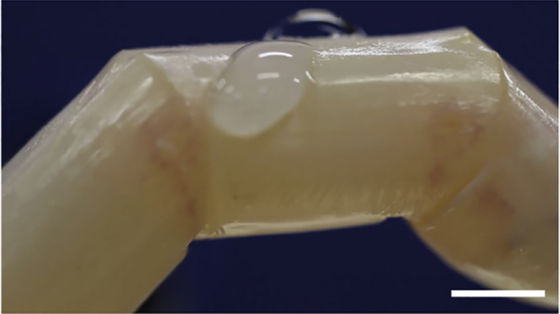
Also, even if a hole is opened ...
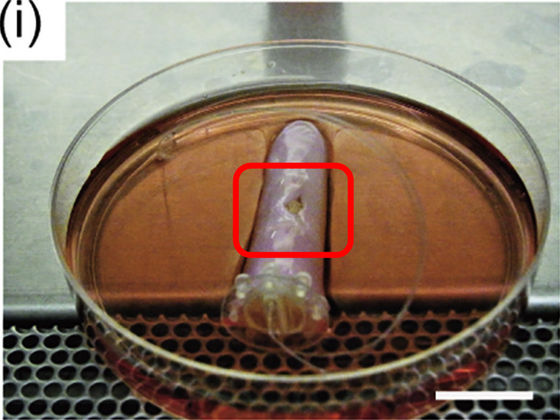
It can be repaired by applying a collagen sheet.
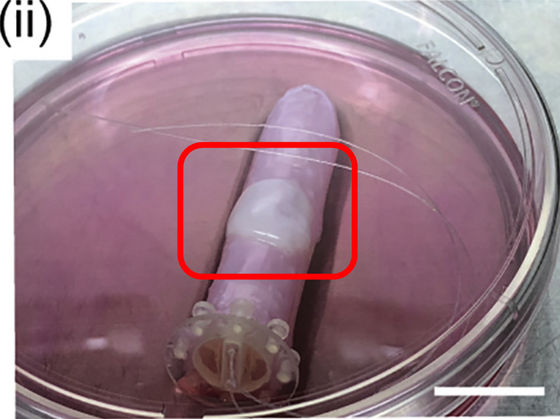
This living skin does not yet have a mechanism to replenish water and nutrients, so it does not last long outside the culture medium. 'The introduction of blood vessels and sweat lines that supply water is an important direction for future research,' the research team wrote in a paper. Also, in the future, it seems possible to incorporate nerves and make materials that double as protection and sensors.
Related Posts:







